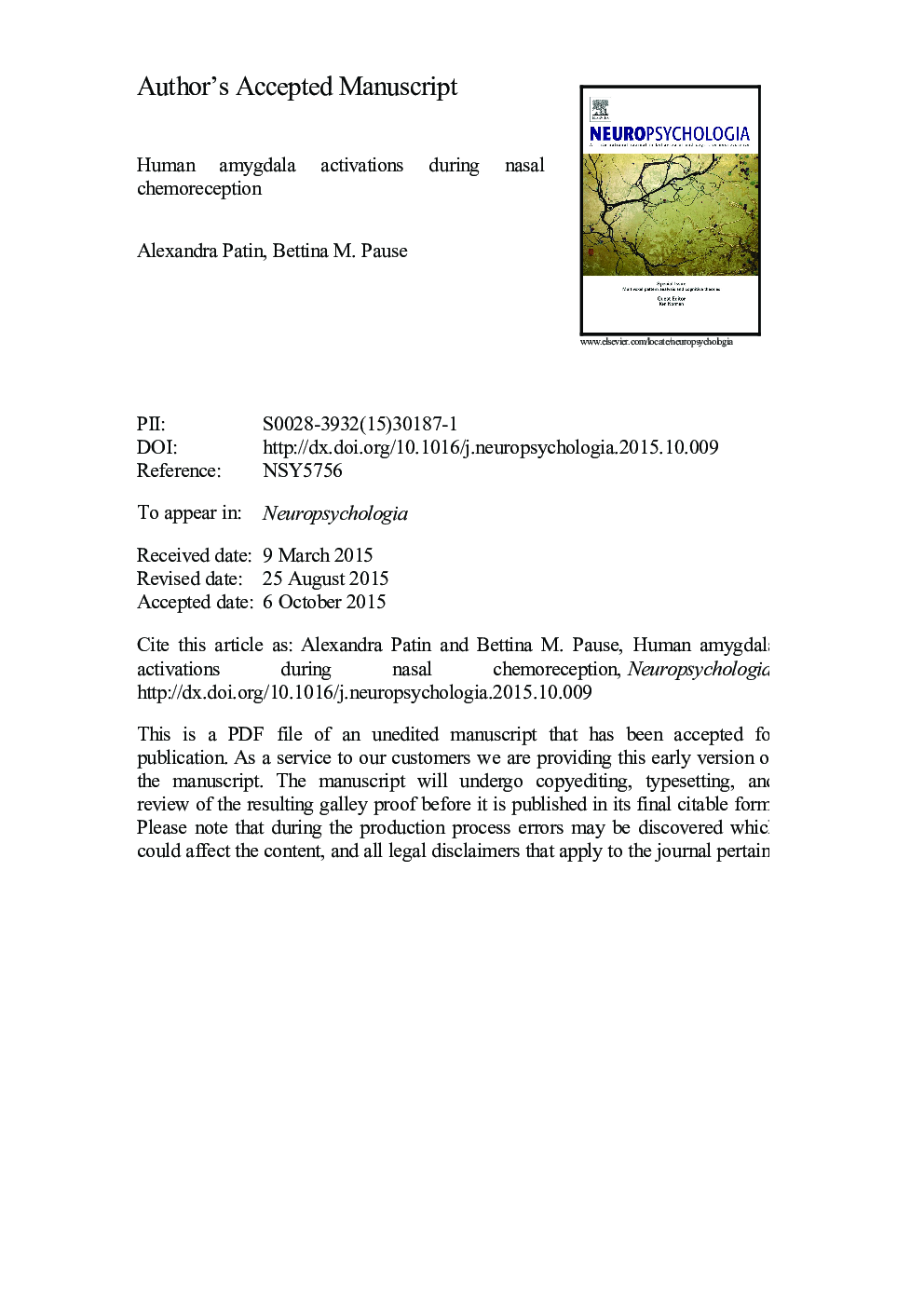| Article ID | Journal | Published Year | Pages | File Type |
|---|---|---|---|---|
| 7319465 | Neuropsychologia | 2015 | 67 Pages |
Abstract
This review serves as a comprehensive discussion of chemosensory stimulation of the amygdala in healthy humans. Following an introduction of the neuroanatomy of chemosensory processing in primary and secondary olfactory structures, functional resonance magnetic imaging and positron imaging tomography studies are systematically categorized based on valence of stimuli, stimulus concentration, and paradigm-dependent amygdala activation. The amygdala shows patterns of lateralization due to stimulus valence. Main findings include pleasant odors being associated with bilateral or left amygdala activation, and unpleasant odors being associated with activation of the right amygdala, suggesting a crucial role of the right amygdala in evolutionary preservation. Potentially threatening social stimuli, however, might be processed apart from the olfactory system and tend to activate the left amygdala. Amygdala response to chemosensory stimuli correlated with simultaneous activation in the orbitofrontal cortex (OFC), piriform cortex (PC), and insula, suggesting a close-knit network of these areas during stimulus processing.
Related Topics
Life Sciences
Neuroscience
Behavioral Neuroscience
Authors
Alexandra Patin, Bettina M. Pause,
